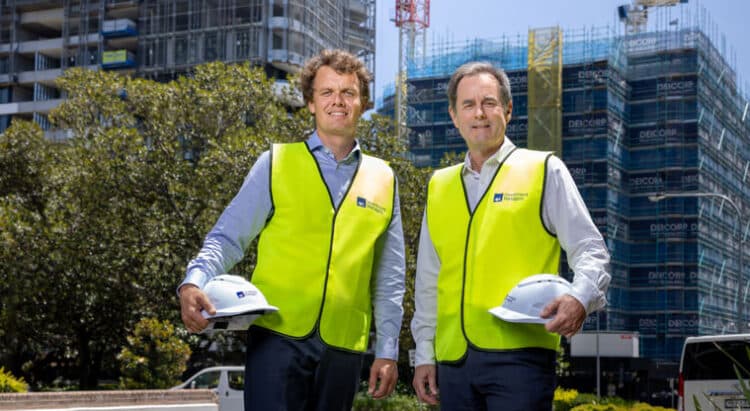The Clean Energy Finance Corporation (CEFC) has committed a substantial $100 million towards a fresh strategy designed to promote clean energy technologies and sustainable living, aiming to foster the development of affordable housing across Australia.
This new affordable build-to-rent (BTR) initiative, overseen by AXA IM Alts, is in its formative phase and aims to construct up to 3,000 apartments. Notably, at least half of these apartments will be offered at reduced rates compared to the prevailing market rents, specifically targeting tenants who meet certain financial criteria within key worker sectors located in major urban centres throughout Australia.
Focus on Energy Efficiency and Sustainability
In line with the International Energy Agency’s approach to zero-carbon buildings, the homes produced under this strategy are set to be highly energy-efficient, fully electric, and powered by renewable energy sources, all while significantly reducing embodied carbon levels.
Michael Di Russo, the CEFC Head of Property, highlighted that this strategy establishes a replicable framework for delivering affordable housing into the market, while prioritising sustainability for tenants who have often been excluded from the advantages of clean energy innovations and eco-friendly living.
Key Projects and Future Goals
The initial investment in the plan includes a 397-unit residential project located in Westmead, Sydney, which is situated near one of Australia’s most extensive hubs for health, education, research, and training. This venture is anticipated to enhance the availability of affordable housing specifically for essential workers in Western Sydney. Looking ahead, future developments will strive for a minimum five-star Green Star Building certification and aim for an average NatHERs rating of 7.5 stars.
AXA IM Alts has teamed up with St George Community Housing (SGCH) to manage the Westmead project once it is completed, as well as other upcoming projects in New South Wales. The Westmead development is projected to conclude in late 2025, providing homes for around 1,000 individuals, with half of the units dedicated to critical healthcare, education, and emergency services personnel in the area.
Leadership’s Vision on Sustainability
CEFC CEO Ian Learmonth emphasised that to make meaningful cuts to emissions within the property sector, sustainability must be ingrained in every development undertaken. He noted that tenants often face hurdles in adopting energy-efficient practices in their rental homes.
“This new approach is a crucial stride towards a fair energy transition, employing a holistic strategy that leverages global best practices to achieve clean energy objectives while benefiting tenants and helping to tackle the issues of housing supply and affordability,” added Learmonth.
He further asserted that this investment yields sustainability advantages for a vital segment of Australia’s housing landscape, leveraging large-scale initiatives.
A Strong Partnership for Future Developments
Antoine Mesnage, Head of AXA IM Alts in Australia, expressed that the CEFC’s investment marks a significant milestone in advancing the affordable housing agenda in Australia, as well as aligning with their broader global residential strategy, which they aim to expand with new capital allies.
Mesnage stated that the Westmead initiative is slated for completion by 2025, aiming to provide essential workers with quality, institutional-grade accommodation close to their workplaces.
“We are looking to replicate this model across Australia on a larger scale, starting with Sydney, Melbourne, and Brisbane, with numerous opportunities identified in our pipeline for expanding and diversifying the portfolio. Our focus is on supporting the transition to a decarbonised economy by achieving leading environmental and social standards across these properties while delivering substantial ESG and impact results, along with long-term value for both investors and local communities,” he concluded.
The Broader Impact of Sustainable Housing
Di Russo added that integrating sustainability into the residential market is essential for Australia’s comprehensive effort to decarbonise its buildings and reduce national emissions. He noted, “AXA IM Alts brings a wealth of expertise from their international ventures in residential and affordable housing investment, aiding in the establishment of high-quality, sustainable housing in key urban areas.”
Importantly, the initiative illustrates that sustainability and affordable housing can coexist, and that enhancing energy efficiency in the affordable housing sector can accelerate equitable energy transitions.
Buildings contribute to over 50 per cent of Australia’s electricity consumption and account for nearly 25 per cent of the nation’s emissions. Residential properties, in particular, are responsible for around 24 per cent of overall electricity usage and more than 10 per cent of total carbon emissions within the country.
The CEFC reported that it has made lifetime commitments exceeding $1.2 billion to boost energy efficiency and sustainability in Australia’s residential market. Between 2015 and 2017, the CEFC allocated $170 million to SGCH for the construction of up to 500 energy-efficient homes, achieving an average NatHERS rating of 7.5 stars, with 300 of these homes developed for the New South Wales Government’s Social and Affordable Housing Fund.
Further, the CEFC collaborates with co-financiers through its specialised $1 billion Household Energy Upgrades Fund, assisting homeowners in expediting their transition to more affordable, cleaner energy while also reducing their carbon footprints.
